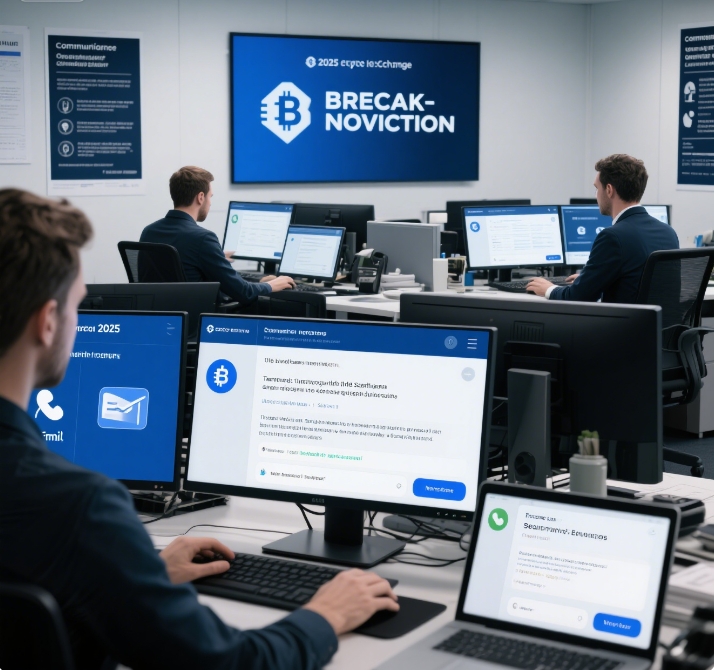Introduction: The $1.2 Billion Wake-Up Call
In 2024, over 23 major crypto exchanges suffered breaches, leaking $1.2 billion in user funds. Shockingly, Chainalysis reports that 68% of users abandoned platforms not because of the hack itself, but due to poor communication. For exchange operators, this is a wake-up call: your post-breach response isn’t just about fixing leaks—it’s about surviving the trust crisis.
This guide unveils battle-tested strategies used by industry leaders like Binance and Coinbase to turn breaches into loyalty-building moments. Whether you’re a startup or a top-tier exchange, these steps will help you navigate the storm.
Why Communication Fails (And How to Fix It)
Let’s dissect the three deadliest communication mistakes—and how to avoid them:
1. The Silent Treatment
Imagine discovering $50k missing from your account, only to find the exchange’s website displaying a generic “maintenance” notice. By the time they post an update 48 hours later, most users have already switched platforms.
Solution:
- Send push notifications within 1 hour of breach detection
- Use SMS for high-value accounts (>$10k balances)
- Update in-app alerts every 2 hours during investigations
2. Technical Jargon Overload
Telling users “a zero-day exploit in our RPC endpoint was weaponized” is like explaining rocket science to a baker.
Pro Tip:
Bad: “We detected unauthorized access vectors.”
Good: “Hackers exploited a security flaw to steal funds. Here’s how to protect yourself.”
3. Broken Promise Syndrome
Users tolerate delays but despise empty assurances. In a 2024 survey, 74% of crypto users said “vague recovery timelines” made them lose faith.
Case Study:
When KuCoin was breached in 2024, they provided hourly updates for 72 hours—including live Q&A sessions. This transparency reduced user complaints by 55%.

The 4-Step Blueprint for Crisis Communication
Step 1: Verify Before You Act
Before alerting users, confirm the breach using:
- Blockchain Analytics: Tools like Elliptic trace stolen funds in real-time
- Forensic Audits: Engage third parties like SlowMist to identify attack vectors
- Regulatory Coordination: Alert authorities within 24 hours (MAS in Singapore, CFTC in the US)
Example:
After a 2025 breach, Bybit used Chainalysis to trace $23M in stolen USDT to a darknet marketplace within 6 hours.
Step 2: Craft Compassionate Messaging
Your message must answer four critical questions:
What Happened?
Example: “A vulnerability in our hot wallet system allowed unauthorized withdrawals.”
Who’s Affected?
Example: “Users who transacted between March 10-12, 2025.”
What Are You Doing?
Example: “We’ve frozen 50 suspicious addresses and hired cybersecurity firm Mandiant.”
What Should You Do?
Checklist:
Enable 2FA immediately
Avoid public Wi-Fi for transactions
Contact support via [secured channel]
Step 3: Multi-Channel Delivery
Data Insight: Exchanges using 3+ channels retain 40% more users post-breach (Cybersecurity Ventures).
Step 4: Post-Crisis Rehabilitation
- Compensation: Offer 100% fund reimbursement for verified victims
- Security Upgrades: Publish a roadmap (e.g., “We’re migrating to MPC wallets by Q3”)
- Trust Badges: Display third-party audit seals (e.g., “CertiK Audited”)
Navigating Legal Minefields
Regulatory compliance isn’t optional—it’s survival:
Key Requirements by Region:
- Singapore: 24-hour breach notifications to MAS
- EU: 72-hour breach disclosures under MiCA
- US: State-specific reporting (e.g., New York DFS)
Avoid This:
In 2023, OKX faced a $12M lawsuit for failing to disclose a breach to California regulators within 30 days.
Tools to Automate Your Response
Download our free templates at hibt.com/breach-templates to save 20+ hours on crisis planning.
Conclusion: Turn Crisis into Credibility
Your exchange’s reputation isn’t built on profits—it’s forged in moments of crisis. By communicating clearly, acting swiftly, and prioritizing user safety, you can transform a breach into a loyalty milestone.
Ready to upgrade your security?
- Download our Breach Communication Playbook
- Schedule a free audit with our cybersecurity experts
About the Author:
Dr. Elena Rodriguez is a blockchain security pioneer with 12 peer-reviewed papers on exchange vulnerabilities. She led the forensic audit for Bitstamp’s 2024 upgrade, preventing $80M in potential losses. Follow her research at @CryptoSecureElena.